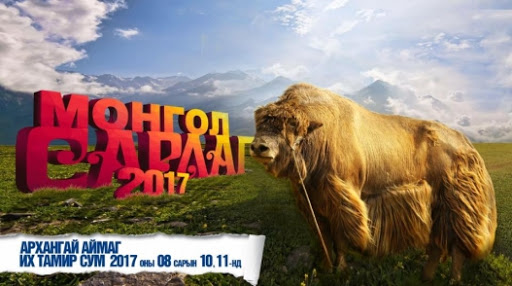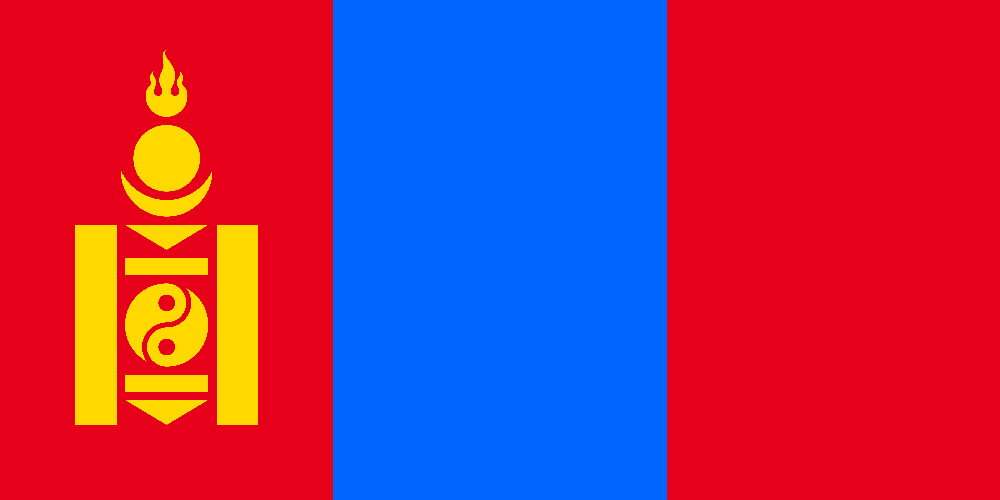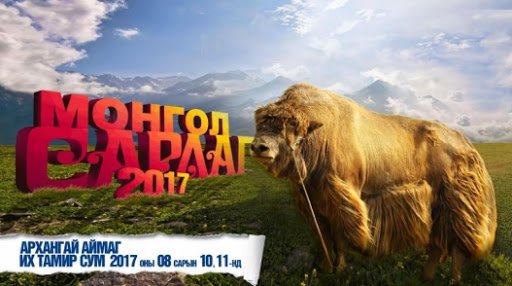
The main goal of this festival was to raise awareness about the benefits of breeding certain yaks, which are beneficial to pastures, and to promote Mongolian yak herds among the international community while reducing income loss resulting from pasture degradation.
The "Mongol Yak-2017" festival was successfully held in the legendary Taikhar steppe of Ikh Tamir soum, Arkhangai aimag, from 9-12 August 2017. The main organizer of this festival – which aimed to promote the unique features of Mongolian yaks for pasture management, herding, transportation, and the overall traditions of Mongolian nomadic culture – was the Pasture Users Association of Arkhangai Aimag. This was the second time this association organized the festival, this year in cooperation with the "One Arkhangai New Development Aspiration" NGO, ShHA's "Green Gold and Livestock Health" project, the National Federation of Pasture User Groups, the local administration of the Akhangai aimag and Ihtamir soums, and the Association of Mongolian Wool and Cashmere. The festival was attended by many people, including yak breeders from 80 soums of 14 aimags, yak product companies, business entities, and various organizations.
The day before the festival was rainy, and it was as if the Blue Sky deity of the mountains welcomed the crowds to the Taikhar steppe. The moist banks of the Tamir river were ready to receive the guests and festival-goers for their celebrations. Yak-drawn carriages, cows, dandy bulls and many other aspects of Mongolian tradition caught the eye of participants. Herdsman from 14 aimags participated in the festival with their "good, well-built, and bulky" yaks. Guests arrived from so-called native yak areas, such as Tariat, Tsahir of Arkhangai, Ih-Uul of Zavkhan, and many soums of Bayankhongor. But it was not just the mountainous areas who sent their delegates, as yak herdsmen also attended from various locations in the Gobi desert, including the Bayandalai, Bulgan, Sevrei, KhanKhonhor and Khurmen soums.
N. Gankhuyag, the director of Mongolian National Federation of Pasture Users, shared his impression of this year's festival: "This year’s festival extended its coverage, with even more tourists in attendance. The more people participate in this festival the more the world learns about Mongolian yaks and the higher the prestige of the festival. Many organizations came together in the organization of this year’s festival. The social and economic basis of Mongolia is evidently our livestock. But surveys show that due to the degradation of pastures, the income of our herders has recently been declining. Some research shows that a typical herdsman’s household has seen a loss of 2.6 million tugriks due to pasture degradation. The main goal of this festival is to promote yaks and yak-breeding, both domestically and internationally, as they are very beneficial for our pastures."
The Mongolian National Federation of Pasture User Groups is currently implementing a "Green Gold and Livestock Health" project across all aimags from 2017 to 2020, sponsored by the Swiss Agency for Development and Cooperation. Previously these were two separate projects, called "Livestock Health" and "Green Gold" respectively, and which had been implemented in 7 western aimags over the last 10 years. The new project aims to spread the good practices of the two previous projects across the central and eastern aimags, over the next four years. It is worth noting that every aimag and soum now has a branch of the Mongolian National Federation of Pasture User Groups.
During the festival, member of Parliament G. Temuulen, from the Arkhangai Aimag, met with delegates from the Ministry of Agriculture, Mongolian National Federation of Pasture User Groups, and researchers of yak breeding and yak products. In addition, a conference entitled "Problems facing Yak Industry and Governmental Policies Regarding These Problems", was held. The end result of the conference was the development of the "Mongol Yak" sub program, aimed at providing certain solutions for the yak industry of Mongolia. As P. Gankhuyag, chairman of the National Veterinary and Breeding Authority, stated in his presentation on "Problems Facing Yak Industry, Measures for the Future", this sub-program "was formulated around the development of core breeding farms, the development of yak cooperatives, policy support from the government, and the development and testing of yak product value chains.”
The presentations were successfully and widely discussed from many angles, and G. Temuulen, Member of Parliament and member of the Parliamentary Standing Committee for Environment, Food and Agriculture officially handed over the document produced from the conference to P. Sergelen, Minister of Agriculture and Light Industry.
Also at the conference, experts reminded attendees about current weaknesses in the legal environment, the loss of selection and breeding plans, and the reduction in properly-trained professionals. The creation of a bull sperm bank at National Center of Livestock Genealogy was suggested.
In order to praise and promote the most beneficial yak breeds, the festival opened with a "Glorious Khangai" yak parade. Guests and tourists were served yak products at "Huhdei" and "Uguuj Buyan" (Yield and Return), "Tsagaadai" (Whitey), "Yagaadai" (Pinky) and "Nutgiin Uguuj" (Country Yield) settlements. The "Huhdei" settlement organized a "Pleasant Yak" contest for yaks with the highest yields, a "Dandy Yak" contest for yaks with the most beautiful harnesses, a "Yak Friendly Herder" contest for herders who bred the most yak calves, and a "Tufty and Fluffy" contest for the cooperative who supplied most yak wool that year. In addition to these, other contests included the "Artsy Yak" contest for most beautifully-executed handmade yak products, the "Rich and Wealth" contest for the cow with highest milk yield, and the "Nutritious Meal" contest for the tastiest dairy product.
In "Tsagaadai" – a Mongol cultural settlement dedicated to travelers and tourists – and "Tod Magnai", yak racing, yak lassoing, yak taming, and archery customs were presented. Another enjoyable event was the Super Lottery of the festival. In the "Yagaadai" settlement, a yak-related song and poem contest was held, after which the most talented participants from aimags and soums made their presentations, adding gaiety to the festival atmosphere. One show worth watching was "Light and Warm", a yak wool fashion show. Partners of the "Green Gold and Livestock Health" project participated in this show, namely the Bayalag-Ulzii, Sor, Uujin, Jinst Murun, Altai Cashmere and Mongol Nekhmel LLCs.
Besides these activities, many discussions to share experiences were held among over 100 participants, representing herders, national producers and organizations covered by "Green Gold and Livestock Health" project. They discussed many topics, including but not limited to: pasture; raw material supply; and the interconnections between national producers and herders.
Thus this festival was devoted to the glorification of yaks – from both forested mountainous areas and the wide, eye-pleasing Gobi desert regions and – provided enjoyable memories for all participants, while taking steps to towards solving many issues facing the lifestyle of Mongolian herders.
Published: 2017-10-27 07:22:02






